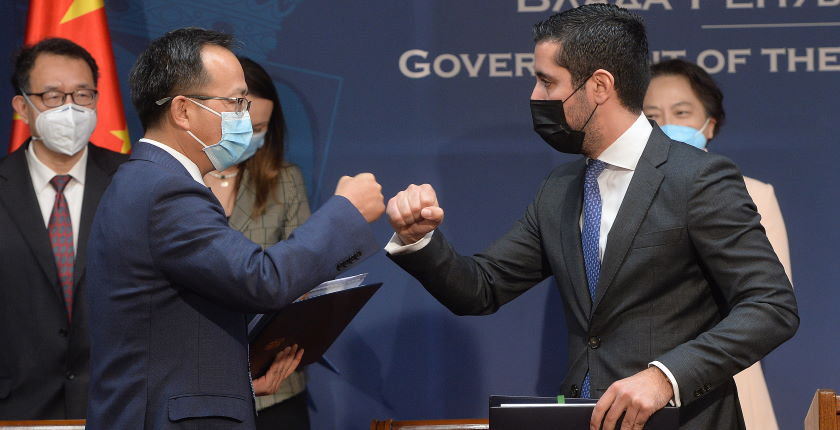
Photo: Ministry of Construction, Transport and Infrastructure
CRBC agreed to design and build dozens of local wastewater treatment and network systems in Serbia and rehabilitate or build six regional landfills in the country. The contracts are worth EUR 3.2 billion.
Minister of Construction, Transport and Infrastructure Tomislav Momirović and Director of China Road and Bridge Corp. (CRBC) for Serbia Zhang Xiaoyuan signed commercial contracts for the design and construction of municipal wastewater treatment units and networks and landfill projects.
Strict deadlines
The ministry said the 3.2 billion deal enables many municipalities and cities to overcome long-lasting infrastructure issues and that it is currently the biggest planned investment in the country and part of the Serbia 2020-2025 plan. Momirović said the country would have top-of-the-line roads, the fastest railway and digital highways and that at the same time it would protect the environment.
Each endeavor has a deadline of 39 months while overall projects must be finished within five years from the construction license date
The contracts open the way for building wastewater treatment units and pumping stations and sewer networks in 65 municipal units, with 73 projects overall, together with the rehabilitation or the construction of six regional landfills, according to the statement. It reveals each endeavor has a deadline of 39 months while that the overall projects must be finished within five years from the construction license date.
Local firms to participate with at least 49%
The wastewater purification facilities will include units for the treatment of sludge, the ministry added. Serbian subcontractors will participate with a share of at least 49%, Momirović stressed.
The works will be conducted under the so-called yellow book model of the International Federation of Consulting Engineers (FIDIC), where cities and municipalities will have the investor status, the ministry said.
CRBC, controlled by China Communications Construction Co., is active in road and railway construction projects. It is also building a highway in Montenegro.
Of note, Belgrade signed a cooperation agreement with China Machinery Engineering Corp. one year ago for the intended financing of research and design of a system for the collection and treatment of wastewater. In a separate deal, Serbia’s capital city authorized CMEC to start the preparatory activities for the project, estimated at up to EUR 771 million in total. There were no official updates in the meantime.


















Be the first one to comment on this article.